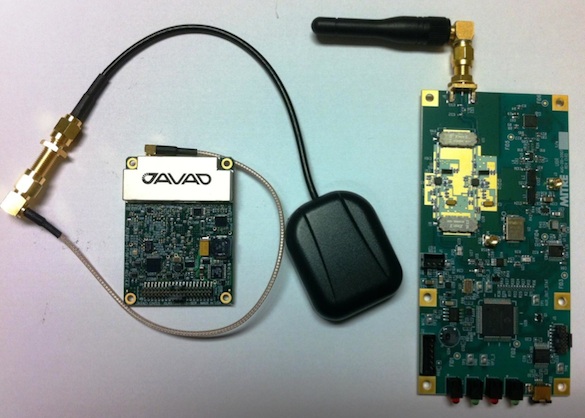Initial Flight Testing of a Universal Access Transceiver (UAT) Automatic Dependent Surveillance Broadcast (ADS-B) Transmitter Prototype for Commercial Space Transportation Using a High Altitude Ballo
PI: Richard Stansbury, Massood Towhidnejad (Co-I), Embry-Riddle Aeronautical University
PI: Richard Stansbury, Massood Towhidnejad (Co-I), Embry-Riddle Aeronautical University

- TA05 Communication and Navigation
- TA13 Ground and Launch Systems Processing
The prototype is developed by Embry-Riddle Aeronautical University (ERAU) based upon a licensed design from MITRE for the UAT Beacon Radio – Transmit Only (or UBR-TX). To differentiate between the two units, the ERAU prototype for this flight opportunity will be named the UBR-ERAU. Developed under a contract with the FAA’s Commercial Space Transportation Office (AST), the UBR-ERAU upgrades the design of the UBR-TX in order to support some of the constraints of space flight, e.g a high-end GPS capable of supporting space velocities and altitudes.
Once the test flight is performed, the technical readiness shall increase from TRL 4 to TRL 6 because the high-quality prototype will have been fully tested within the target operating environment. By proving that the upgrades allow the unit’s operational capabilities to exceed that of the previous model, the UBR-TX, our team will have made significant progress in moving this technology forward.
The benefits of developing the UBR-ERAU to support commercial space transportation is very compelling. It is anticipated that the developed prototype will become a standard payload on any flight of reusable launch vehicles once it has been proven robust and reliable.
The payload receives real-time measurements of its GPS position and altitude. It also calculates the altitude based upon the measured barometric pressure. Once per second, an onboard microprocessor analyzes this data, produces a UAT data packet, and then transmits this data via an integrated radio and external antenna. The transmitted packet can be received by any UAT ground-based or airborne receiver within RF line-of-sight. During the flight, the ERAU team will have two or more ground-based receivers (GBR) located in geographically strategic locations to ensure that the data is received throughout the mission flight from launch, to maximum altitude, and back to recovery.
The payload has not flown on a high-altitude balloon, solid fueled rocket, or liquid fueled rocket. It is, however, comprised of a number of technologies that have flown on one or multiple of these platforms.
Technology Details
-
Selection DateAFO3 (Mar 2012)
-
Program StatusCompleted
- 2 Balloon
Development Team
-
PIRichard Stansbury
-
PI Organization
-
Co-IMassood Towhidnejad
-
Co-I Organization
-
SponsorEmbry-Riddle Aeronautical University, Inc.
-
PartnersFAA, NASA Kennedy Space Center, MITRE Corporation

